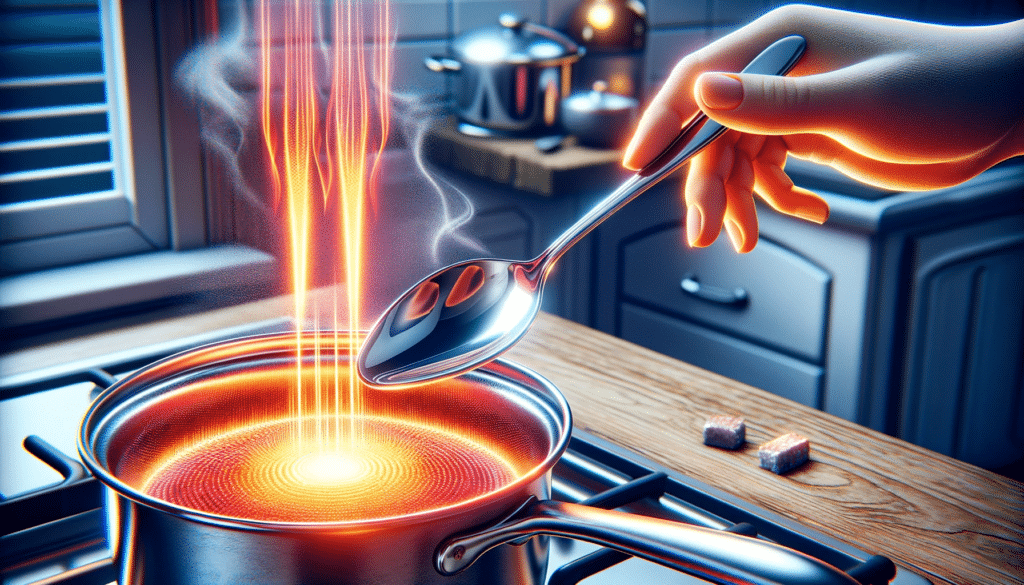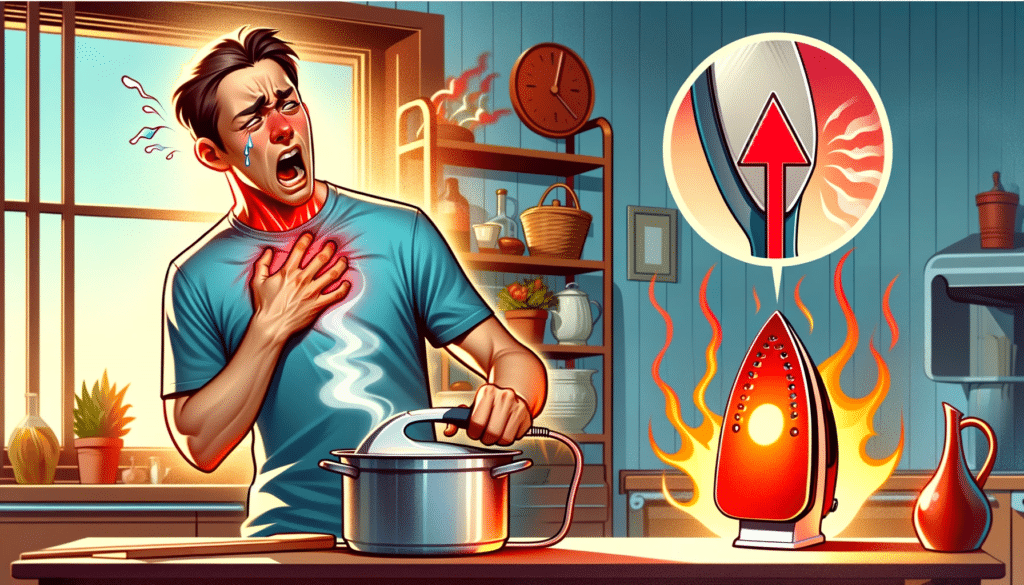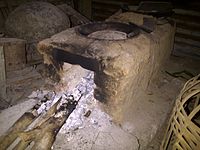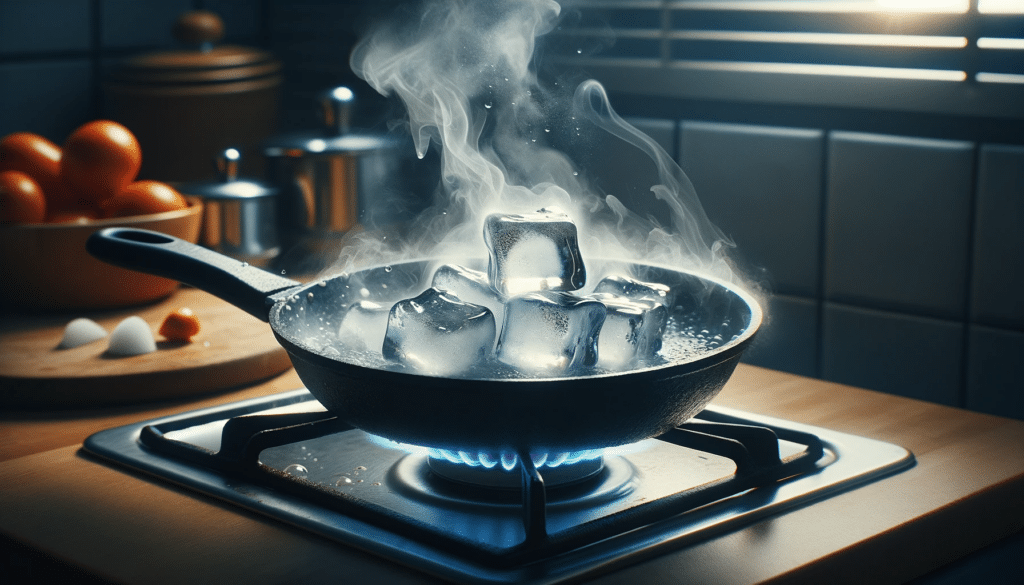This article discusses about thermal conduction examples. It is a mode of heat transfer which takes place by the collision of molecules present in the medium.
Heat is the energy existing between two difference which are thermally different from each other that is they both are having different temperatures. The heat energy flows just like the wind. It flows from the higher to lower temperature system. Out of which thermal conduction is one such type.
- Spoon getting hot when in contact with hot vessel
- We feel hot after touching a hot object
- Warming of muscles using heating pad
- Heat from liquid makes the cup hot
- Holding warm hands make your hands warm too
- Ironing clothes
- Walking on hot sand
- Touching a light bulb
- Touching a hot stove
- Melting of ice when placed on hot pan
- Melting chocolate in hand
- Shallow frying of food such as cutlet
- Touching a silencer of vehicle
- Putting hands in hot water
- Touching ice
Thermal conduction examples
We can see thermal conduction taking place almost every day in our daily lives. It is responsible for us getting burnt when we touch a hot object. Let us see different examples of thermal conduction. They are given below-
Spoon getting hot when in contact with hot vessel
The molecules of vessel are continuously vibrating at high energies. This energy is transferred to the molecules of spoon which in turn gets hot. This way the transfer of heat takes place between the spoon and vessel through thermal conduction.

We feel hot after touching a hot object
Similar to the spoon and vessel example, the molecules of hot object transfers the energy to our skin, this gives us sensation of heat. This is also an example of thermal conduction as the sensation of heat occurs after contact.

Warming of muscles using heating pad
The heating pad has high energy molecules, this energy is transferred to the skin and then to the muscles. This way we feel relaxed once the heat reaches our muscles. This is also an example of thermal conduction.
Heat from liquid makes the cup hot
The molecules of heat are flowing with high energy, this energy is transferred to the surface of the cup which is contact with the liquid.

Holding warm hands make your hands warm too
A warm hand has more energy than the colder hand. The colder hand becomes warm once the energy is transferred to it. The energy transfer takes place until both the hands come at same temperature.
Ironing clothes
The hot iron transfers heat to the clothes. This is an example of thermal conduction between clothes and iron.

Walking on hot sand
Hot sand transfers heat to our feet when we walk on it. This is why our feet are burnt when we walk on sand with very high temperature. The thermal conduction takes place between feet and sand.

Touching a light bulb
The surface of the light bulb is very hot. Upon touching it, the heat is transferred from the surface of the light bulb to our hands which is why we feel warm after touching it.

Touching a hot stove
The stove is at higher energy state, after touching which, our hands are burnt due to heat transfer between stove and our hand.

Image credits: Okkisafire, Indonesian brick stove, CC BY-SA 4.0
Melting of ice when placed on hot pan
Hot pan transfers heat to the block of ice. Ice starts melting once the temperature starts increasing beyond 0 degrees. As the heat is transferred from the pan, the temperature of the ice block increases and starts melting.

Melting chocolate in hand
Similar to the ice block example, the chocolate starts melting once it absorbs heat from one’s hand. This is due to thermal conduction.
Shallow frying of food such as cutlet
Shallow frying includes heat transfer from pan to the cutlet. Thermal conduction takes place between cutlet and the pan.
Touching a silencer of vehicle
Silencer becomes hot once the vehicle is started and used it for a while, the heat from the silencer is transferred immediately to our leg/hand when we touch it. This is due to a large temperature difference between both. It is recommended that we stand away from silencers as they get very hot sometimes specially right after using the vehicle.
Putting hands in hot water
The energy from hot water is transferred to the hands. This way thermal conduction takes place between hot water and hand.
Touching ice
Ice is colder than our hands, so the heat is being transferred from our hands to the ice block. This happens with the help of thermal conduction between ice block and our hands.
What is heat?
The energy flowing between the two systems solely because their temperatures are different is called as heat.
We shall see about different types of heat transfer in this article.
Modes of heat transfer
The transfer of heat from system to system can take place through various methods. Sometimes it needs a medium and sometimes it travels in vacuum.
We shall see different ways by which heat can be transferred from one system to another. They are discussed below-
- Heat transfer by conduction- Heat conduction is a mode of heat transfer in which it is transferred with the help of collision of molecules present in the medium. The molecules keep vibrating and transfer the energy from on object to other. This type of heat transfer requires both the objects to be in contact.
- Convection– Convection is a mode of heat transfer in which the heat is transferred as a result of movement of fluid particles between the two mediums. The fluid can be water or even air This is why we feel hot when we stand near boiling water.
- Radiation– This form of heat transfer can take place in vacuum and is defined as the heat transfer which takes place in the form of waves or particles through space.
What is thermal conduction?
Thermal conduction is a type of heat transfer that takes place between two systems which are in contact.
The molecules inside these systems collide with each other for transferring the heat form one place to other. This type of heat conduction needs contact between two systems compulsorily for heat transfer to take place.
What is thermal conductivity?
Similar to electrical conductivity that is the ability of a material to conduct electricity, thermal conductivity also means the ability of a material to conduct transfer of heat.
Even the shape of cross section can affect the value of thermal conductivity. We shall study more about thermal conductivity in the sections below.
Heat transfer through different cross sections
Heat transfer also depends on the shape of the cross section. For a cylinder its different, for sphere its different and for a cuboid is different.
The formula for heat transfer for different shapes are given below-
- Rectangular slab-
The heat transfer through a rectangular slab takes place normal to the cross section. The formula for heat transfer for a rectangular slab is given below-
where,
k is the thermal conductivity of the material
A is the cross section area
Delta T is the temperature difference between the two ends of slab
Delta x is the length of heat transfer
- Sphere-
The formula for heat transfer through spherical shell is given below-
where,
a and b are the radii of outer and inner sphere respectively
Ta is the temperature at the surface of sphere with radius a
Tb is the temperature at the surface of sphere with radius b
- Cylindrical shell-
The cylindrical shell, comprising two cylinders with an inner radius ( b ) and an outer radius ( a ), follows a specific formula for heat transfer. The formula is expressed as  , where ( Q ) represents the heat transfer rate.
, where ( Q ) represents the heat transfer rate.
where,
a is the radius of outer cylinder
b is the radius of inner cylinder
Ta is the temperature of surface of outer cylinder
Tb is the temperature of surface of inner cylinder
Hi ….I am Abhishek Khambhata, have pursued B. Tech in Mechanical Engineering. Throughout four years of my engineering, I have designed and flown unmanned aerial vehicles. My forte is fluid mechanics and thermal engineering. My fourth-year project was based on the performance enhancement of unmanned aerial vehicles using solar technology. I would like to connect with like-minded people.